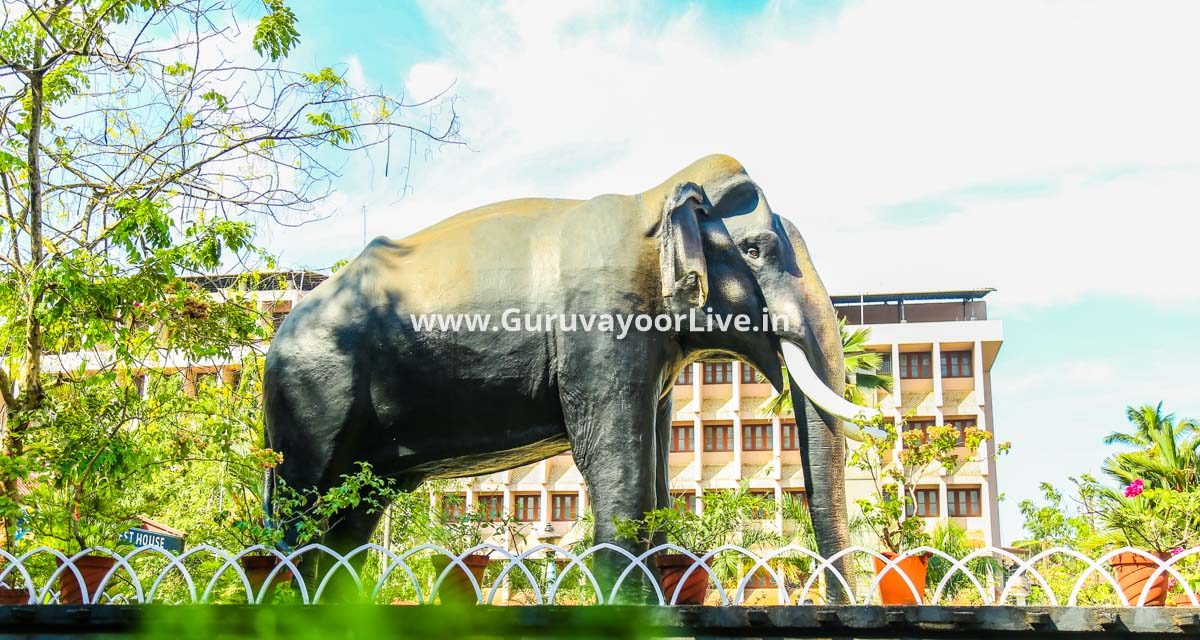

Architecture Of Guruvayoor Temple
Auspicious beginning of Sri Guruvayurappan ( Sri Krishna) Temple Architecture. Ancient ceremonies and joyful celebrations will dominate the temple premises on Saturday, February 2, 2013 when Thanthri Brahamasri Divakaran Nambuthiri gives permission to the artisans to place the first granite component at the center of the basement at the auspicious muhurtham between 9:30 AM and 10:30 AM. Construction of the sanctum sanctorum (Sreekovil) is the first step that will be seen in the initial stages of the building. This temple will be a replica of the original ancient Guruvayur Temple in Kerala. Intricate granite components were carved in the quarries in Kerala under the supervision of the architect Sri Kanipayyur Krishnan Nambuthiripad. The main temple, when completed, will have several architectural features distinct from other Hindu Temples in the US. Ritualistic traditions practiced in Guruvayurappan Temple are known to be set by Adi Sankarachaya. Several ceremonies (poojas and homams (havan) will be performed in the current temporary building at 11620 Ormandy Street, Houston, TX 77035 during February 1, 2, and 3. Guruvayoor temple is a typical example for Kerala's temple Vastuvidya (ancient treatises on architecture). It is faced towards the East with two Gopurams, one at East (Kizhakkenada) and other at West (Padinjarenada). The entire area between these Gopurams is roofed with tiles and known as Anapanthal. At the centre of this is a square shaped pillared hall called Nalambalam, the outer wall of which is fixed with a gallery of oil lamps. At the south side of the Nalambalam, there is a sub shrine of Sasta or Lord Ayyappan. At the north-east side of this shrine is the Koothambalam , where, in olden times, dance performances were held. In the front and the east side of Nalambalam , the Belikkal and Deepastambas - Pillar of lights are located. There are a number of such light pillars in the temple. The Deepastambas ,at each Gopurams ,are of special interest. The eastern side Deepastambam is 24 feet in height and has thirteen circular receptacles to hold the wicks. Of the other two at West Gopuram, one is in the shape of a tree. Dwijasthamba - It is a flag-staff ,around 70 feet height, fully covered with gold. The square shaped Sree Kovil has two stairs and three rooms inside. The inner most room is known as Garbhagriha (The idol of Lord Krishna is placed here). Here, the two doors and the roof are covered by Gold. All the articles inside the Garbhagriha are in Gold. The outer room is called Mukhamandapam. The wall of Sree Kovil is decorated with ancient (17th century) murals. In front of the Sree Kovil is the Namaskara Mandapam, square in shape and with a pyramidal roof. Surrounding this is a pillared square hall called Nalambalam or Chuttambalam. A gallery of oil lamps is fixed on the wall of Nalambalam. In the north-eastern side of the Sree Kovil is the temple well called Manikinar. In the North side of the temple, a sub shrine of Devi, 'Edathirithi Kavu' is situated. The Oottupura, the place for prasadauttu is also located in the north side Here, the daily lunch is arranged for the devotees .Next to it is the temple tank Rudratheertha which is located near the north side of the temple. SREEKOVIL The Sreekovil (Sanctum Sanctorum) is designed in 2 layers with copper sheet roofing plated with gold. The deity is in the traditionally orthodox form of Mahavishnu, with all the compliments - four arms each carrying sankh (conch), chakra(wheel), gadha (club) and padmam (lotus). The Moolavigraha (main idol) is made of Pathalanjana Shila and is considered extremely sacred. There are two more idols one of silver and the other of gold of which the silver idol is more older. These are used for the seeveli and other processions. Generally the gold idol is used and the silver idol which is more older is taken out only for Arattu and on a few special occasions. There is a repletion of traditional mural paintings on all the three sides, depicting sequences from puranic tales and Krishnaleela. There is amorous and erotic accent in the murals. The old doors of Sreekovil are replaced with a new set secured with gold plated bars and embellished with golden bells. There are 101 bells, all made of silver and plated with gold. Sopanam, the steps leading to the Sreekovil, are made of stone with carvings and designs of attractive craftsmanship.








